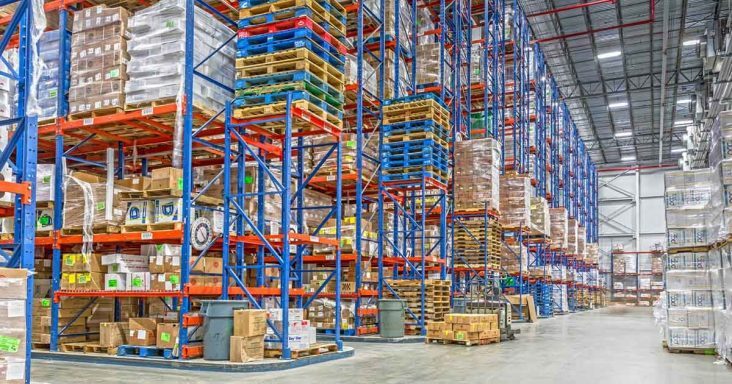Supply chain execs anticipate delivery delays, inflation this peak season, survey shows
by September 28, 2022 2:10 pm 1,431 views

Supply chain executives expect the holiday shipping season, or peak season, to be negatively impacted by delivery delays, price escalation and labor issues, according to a recent survey.
In July, Deposco and Supply Chain Dive surveyed more than 160 retailers, manufacturers, wholesalers and third-party logistics companies. Most respondents are somewhat confident in their ability to handle fulfillment requirements using existing systems and processes.
Still, 52% of respondents are managing peak season differently than in previous years. And, about half of respondents no longer consider peak season to be a specific period of increased activity. Instead, they consider it to be a year-round event.
“Demand is up across the board,” said Michael Johnson, director of business consulting at Deposco, a provider of inventory management technology. “There will still be peaks and valleys, but for many, what used to be peak season in terms of fulfillment is now the new normal because of e-commerce and changing expectations.”
For example, he said that a shipper that used to complete 10,000 orders for Black Friday is now completing 10,000 orders on a regular Tuesday in March.
“The floor has been elevated significantly,” Johnson added. “It will be up to supply chain professionals to find creative and innovative ways to deal with ebbs and flows.”
Justin Stone, senior vice president of customer success at Deposco, noted the importance of data visibility in supply chain operations amid the existing omnichannel environment.
“With information coming from so many places, there’s a dire need to consolidate it within one central platform,” Stone said. “This change makes a supply chain executive’s job even more complex. They now have to understand both planning and execution to do their jobs really well.”
The survey shows that 59% of respondents expect peak season to be more challenging than last year. One-third of respondents expect it to be as challenging as last year.
According to the survey, 60% of supply chain executives are most concerned with inflation and a declining economic outlook. Other concerns include COVID-19 restrictions and U.S. seaport delays. The majority (88%) expect higher prices for supplies and services during peak season because of inflation. Also, respondents anticipate reduced consumer demand (49%), more order cancelations (35%), longer lead times (33%) and more returned inventory and return-related issues (19%).
Nearly 60% of respondents were somewhat confident or not confident in the ability of existing systems to handle fulfillment. Most (79%) agree that investing in modern warehouse management systems or order management systems will prepare operations for improved profitability during peak season. However, 36% of respondents have invested in the systems before peak season this year.
“Considering the fact that software seems like something supply chain professionals have control over – as opposed to factors like labor and the economy – this number is surprising,” Johnson said. “But it’s also understandable. It can be confusing when you’re evaluating multiple systems.”
Also, changing to new technology can be challenging and “can make it tempting to stick with the solution you have, even when you know it isn’t helping like it could be,” he said.
Regarding peak season concerns, Stone said supply chain executives are comparing growth opportunity against cost, and inflation has closed the gap between the two. He said they must be “uber-efficient with margins and how they invest” because of rising costs and slower growth. Also, the labor shortage might negatively impact delivery delays and rising prices.
“It has become more about finding a balance between growth and profitability,” Stone added. “Companies can’t throw bodies at problems like they used to. They’re looking for solutions, but they don’t have as much in their piggy banks to work with.”
Survey respondents expect labor shortages to impact their ability to prepare for peak season in four ways, including the inability of fulfillment centers to scale capacity with demand, decreased on-time-delivery ratings, budget impacts because of higher pay and challenges finding transportation capacity to move inbound freight.
The respondents plan to prepare for peak season by hiring seasonal workers (51%), increasing labor retention efforts (43%) and asking workers to commit to overtime (40%).
According to Transport Dive, Walmart is looking to hire about 1,500 truck drivers as part of its 40,000-employee hiring push for the holiday season. The truck driver positions will be permanent, while the overall hiring plan includes seasonal and full-time workers. In April, Walmart announced offering new drivers starting salaries of up to $110,000 annually. The company has nearly 13,000 truck drivers.
According to the survey, respondents have found the following as most effective in preparing for peak season:
- Increasing inventory (49%)
- Expanding supplier network (47%)
- Expanding fulfillment network (35%)
- Cloud technology solutions, including warehouse management systems or order management systems (25%)
“Growth, revenue generation and customer experience are often directly tied to a retailer’s ability to track inventory and understand how to efficiently and effectively fulfill orders,” Stone said. “If you don’t have inventory to sell, then you’re not making money. Supply chain technology is no longer just about manufacturing and the creation of inventory. It’s about orchestrating that inventory across different sales platforms to provide a great omnichannel customer experience. We’re seeing more brands not only manufacture goods but also manage operations and distribute goods. This is the holy grail of managing the customer experience.”
To manage the return of goods this peak season, 36% of respondents plan to allow consumers or retailers to keep or dispose of mistakes and damaged goods. More than one-third plan to gather additional data about returned items to identify problem areas and trends. Also, 31% of respondents plan to establish locations or partnerships that allow customers to easily return unpackaged items.
